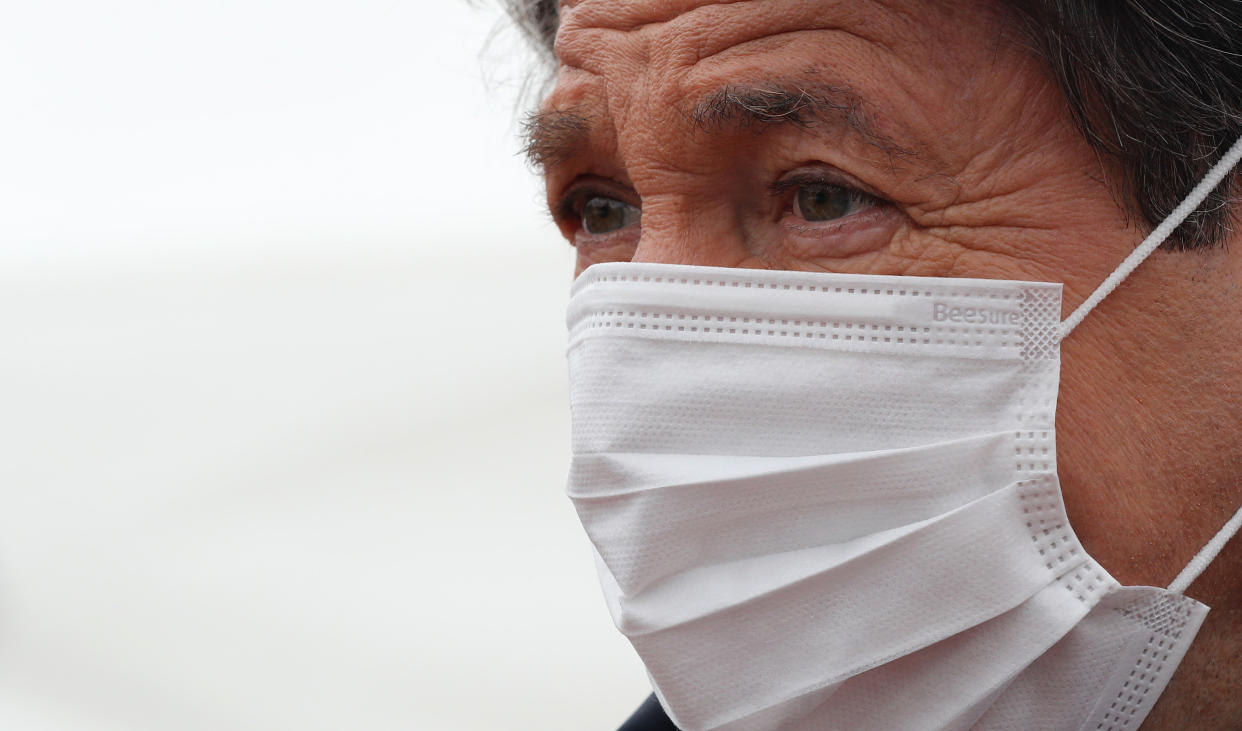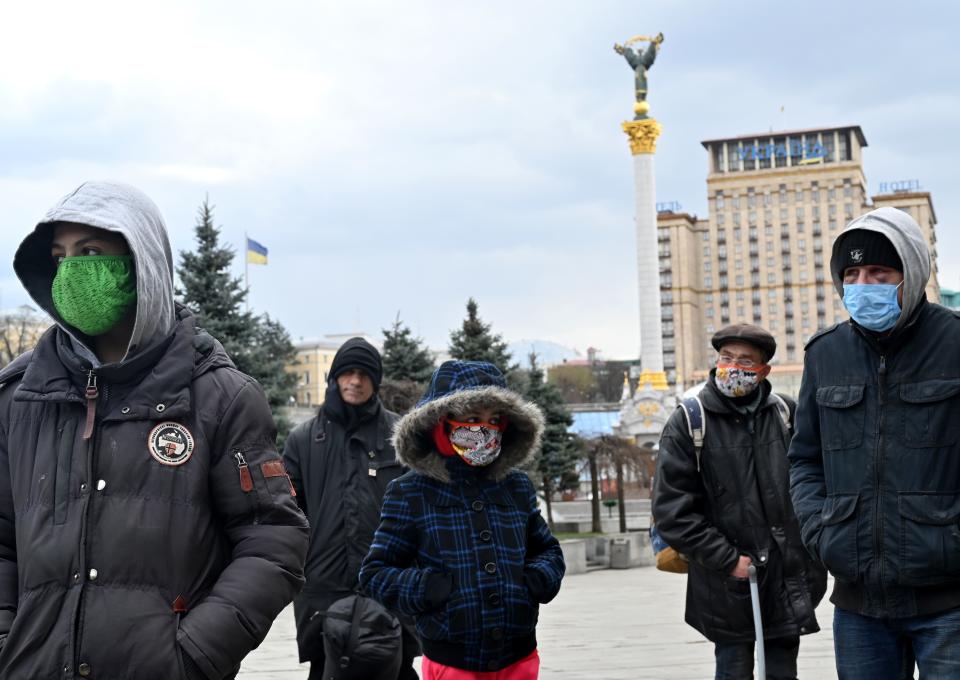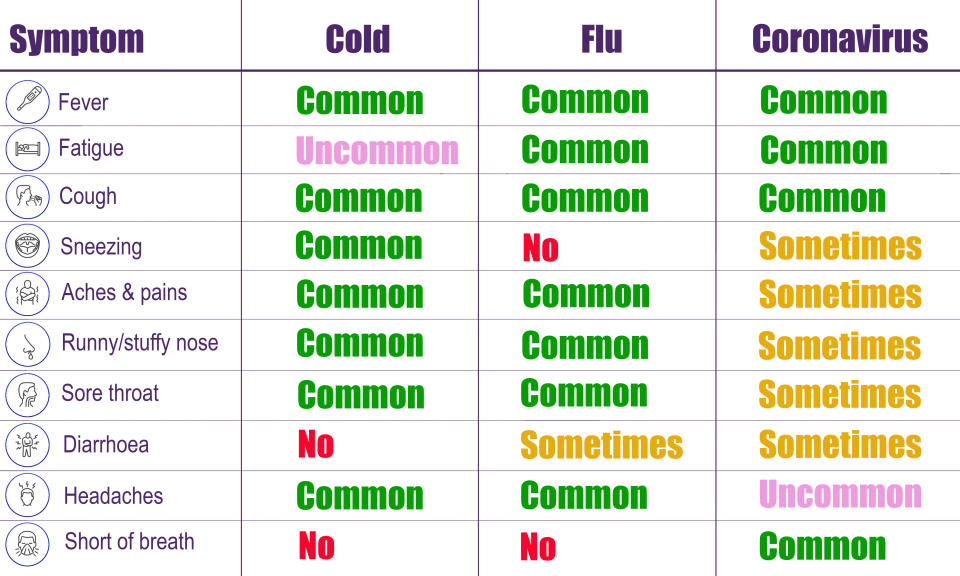Coronavirus: Study suggests social distancing is helping to stem the pandemic

A new study suggests social distancing will be effective at stemming the coronavirus outbreak.
Boris Johnson has introduced enforcements that only allow Britons to leave their home for “very limited purposes”.
These include shopping for “necessities” as “infrequently as possible”, with many supermarkets limiting the number of people in their store at any one time.
While we are permitted to exercise outdoors, officials have stressed that we must maintain a 2-metre (6.5ft) distance from anyone we do not live with.
Anyone with the tell-tale fever or cough has been told to self-isolate entirely for seven days, while other members of their household must do the same for two weeks. Early research suggests the coronavirus is mild in four out of five cases – however, it can trigger a respiratory disease called COVID-19.
While the measures may sound extreme, scientists from the London School of Hygiene & Tropical Medicine (LSHTM) concluded that “physical distancing interventions are effective” and “should lead to a substantial decline in cases in the coming weeks”.

The coronavirus is thought to have emerged at a seafood and live animal market in the Chinese city of Wuhan at the end of last year.
It has since spread into 180 countries across every inhabited continent.
Latest coronavirus news, updates and advice
Live: Follow all the latest updates from the UK and around the world
Fact-checker: The number of COVID-19 cases in your local area
Explained: Symptoms, latest advice and how it compares to the flu
Since the outbreak was identified, more than 874,000 cases have been confirmed, of whom over 185,100 have “recovered”, according to Johns Hopkins University.
Incidences have been plateauing in China since the end of February, and the US and Europe are now the worst-hit areas.
The UK has had more than 29,000 confirmed cases and 2,352 deaths.
Globally, the death toll has exceeded 43,000.
Social distancing could have a ‘substantial impact’
The LSHTM scientists looked at a survey completed by 1,356 people on 24 March, the day after the UK’s lockdown was introduced.
Prior to this, Britons had been told to avoid social contact, ditch non-essential travel and work from home, if possible.
The participants reported the total number of direct contacts they had on 23 March.
Contact was defined as at least a brief face-to-face conversation or any sort of skin-to-skin interaction.
Results were compared against a 2008 study on how social mixing affects the spread of infections.
The scientists found coronavirus fears caused a person’s average number of daily contacts to reduce by nearly three-quarters (73%).
They believe this is sufficient to drive the virus’s “basic reproduction number” to below zero.
All infections have a basic reproduction number, which is the number of people a patient statistically goes on to infect.
For example, a number of three would mean every patient passes the virus to three others.
If the number is more than one, the infection spreads. If exactly one, it plateaus. If less than one, the outbreak dies out.
Professor David Heymann, also from the LSHTM, previously told Yahoo UK basic reproduction numbers “change daily as new information comes in”.
Nonetheless, the scientists pegged the coronavirus’s basic reproduction number as 2.6 before lockdown was implemented.
They calculated the intervention would reduce it to 0.62, “indicating that physical distancing interventions are effective in reducing the spread of the [coronavirus], and should lead to a substantial impact and decline in cases in the coming weeks”.
This will be seen immediately due to the time lag between catching the infection and developing symptoms, which typically occur within five days.
There is also a delay in reporting hospital cases.

‘Credible’ research
The study has been published online, not in a peer-reviewed journal.
A peer-reviewed study is scrutinised by a team of independent experts who point out its strengths and limitations.
Nevertheless, other scientists have welcomed the results.
“An important factor is in lockdown you may be meeting two to three contacts a day but they are largely the same contacts, further limiting the potential for ongoing transmission,” said Professor Keith Neal from the University of Nottingham.
“[The scientists’] conclusion that [the basic reproduction number] may be below one is credible.
“Once [the basic reproduction number] is below one the epidemic cannot sustain itself, as each case produces less than one new case and the epidemic eventually ceases.
“This does not provide any evidence for how long we need to continue lockdown, but similar studies could be done to look at the social mixing patterns if they are partially relaxed.
“A number of countries held up as being good models are allowing restaurants and bars to be open, but with operating restrictions on numbers and how far tables are apart.”
Another expert agreed, calling the study “extremely valuable”.
“How quickly [the outbreak peters out] depends on how far below one the [basic reproduction] rate can be pushed,” said Dr Jennifer Cole from the University of London.
“Avoiding handshakes, air kisses and so on between those who are still working at this time is extremely important.
“As further data comes through in the coming weeks, the value of physical distancing, and of behaviour in general, will be even better understood, but this study shows clearly the important role everyone can play in ensuring [the coronavirus] can be overcome.”
Professor Brendan Wren from the LSHTM called the research “very useful”, but said it needs “to be validated by independent traditional methods like community testing”.
Only hospital patients are routinely being tested for the coronavirus in the UK.

What is the coronavirus?
The coronavirus is one of seven strains of a virus class that are known to infect humans.
Others include the common cold and severe acute respiratory syndrome (Sars), which killed 774 people during its 2002/3 outbreak.
The coronavirus mainly spreads face-to-face via infected droplets expelled in coughs and sneezes. There is also evidence it can be transmitted in faeces and urine and survive on surfaces.
Symptoms tend to be flu-like, including fever, cough and slight breathlessness.
In severe incidences, pneumonia may come about if the infection spreads to the air sacs in the lungs, causing them to become inflamed and filled with fluid or pus.
The lungs then struggle to draw in air, resulting in reduced oxygen in the bloodstream and a build-up of carbon dioxide.
The coronavirus has no “set” treatment, with most patients naturally fighting off the infection.
Those requiring hospitalisation are offered “supportive care”, like ventilation, while their immune system gets to work.
Officials urge people ward off the infection by washing their hands regularly and maintaining social distancing.




